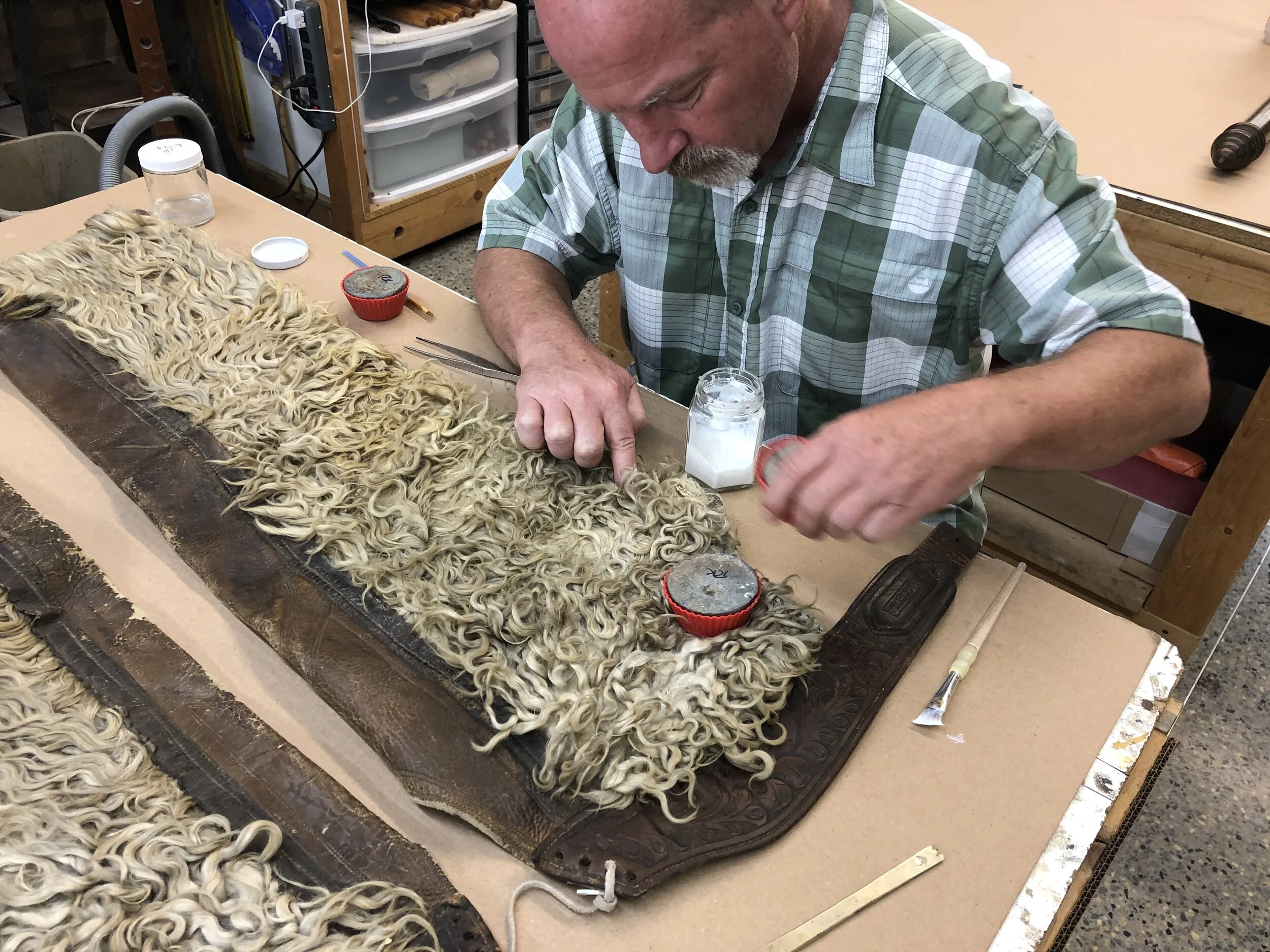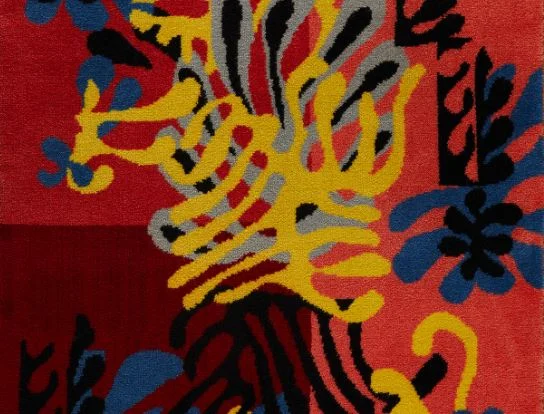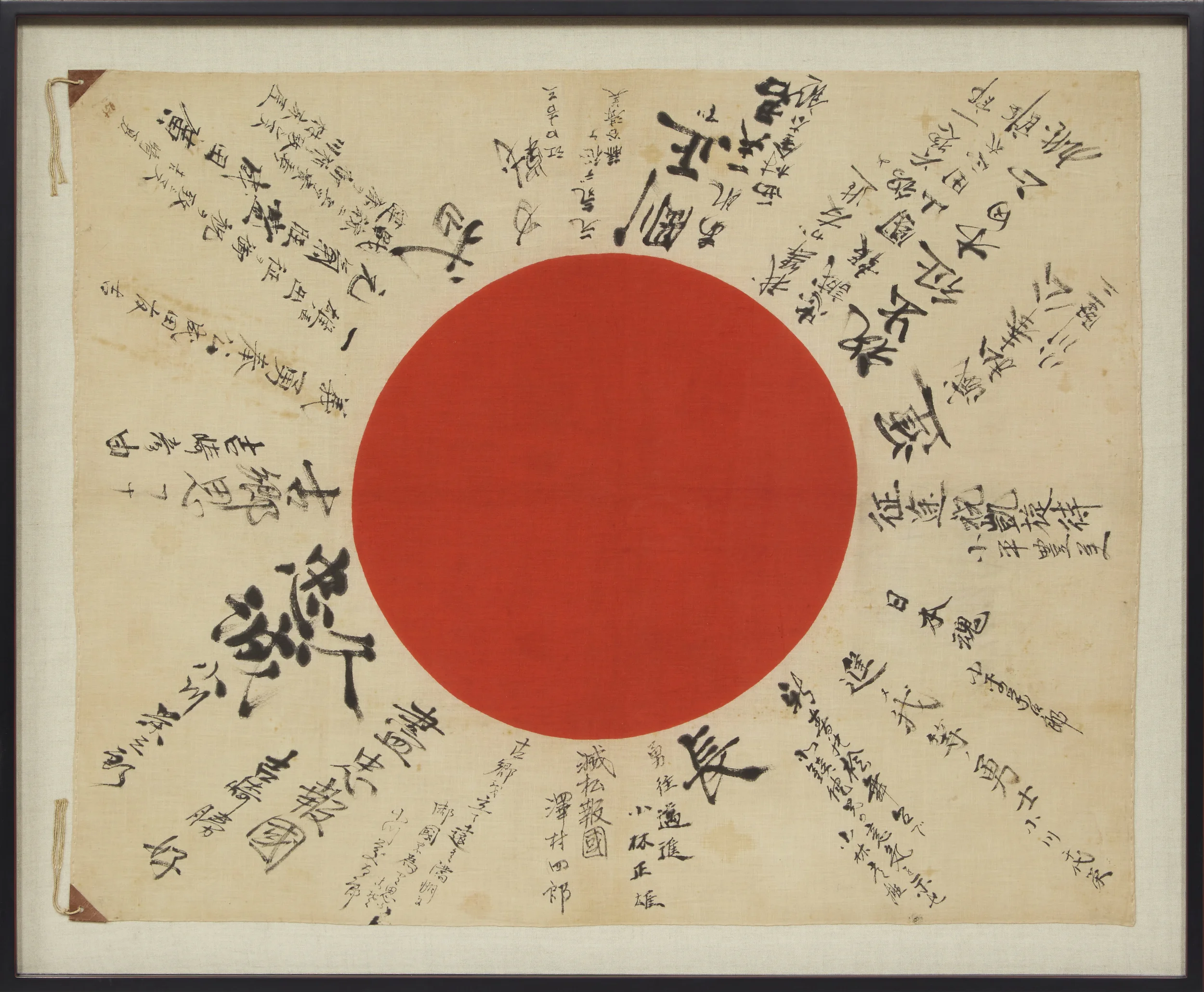Samplers are a type of embroidery traditionally used to showcase a person's needlework skills. During the 17th and 18th centuries, samplers became increasingly popular. They were common among young girls as a way to learn needlework and teach different stitching techniques. Samplers were also used as a way to record family history, often given as gifts or hung on the wall as a decorative item.
Coverings, Calendars and Ketubahs
As Jewish heritage spans many countries, cultures, and customs, the ceremonial and ritual objects pictured here are only a few of many permutations and preferences. Nevertheless, they share the same background and prominence in their congregations and households. The conservation of these pieces often had the added task of ensuring that these objects could still be used or ritually displayed, which will also be discussed.
Something Old, Something New: Conserving an Antique Wedding Dress
Spring is the time for weddings, as the weather is warming and the flowers are in bloom. This month, we had the pleasure of preserving an antique wedding dress made in 1900 from the Elk Grove Historical Museum located in Elk Grove Village, Illinois. According to their records, the dress was worn by Clara Schuette, who grew up in the museum’s farmhouse and married Henry Luehring on April 4th, 1901 in the museum’s parlor.
Cleaning a Crazy Quilt
Crazy quilts – a textile trend in the late 1800s – are often anything but crazy. These one-of-a-kind treasures are intentional statements, consisting of irregular shapes, intricate embroidery, and a myriad of fabrics. When a crazy quilt from 1890 was brought to The Center for treatment, our Textile Conservator was thrilled to work on such a unique piece.
Howdy, Partner! Conserving Chaps
Conserving the Knight
Henri Matisse's Textiles: Conserving a Mimosa Rug
Known mainly for his colorful paintings and abstracted paper cutouts, Henri Matisse is a name familiar to art enthusiasts and casual museum-goers alike. Perhaps not as well-known is Matisse’s deep and life-long connection to textiles and fabrics. When The Center recently encountered an example of one of the artist's textile designs, we knew there must be a story behind it.
The Silk Shatter Shaker Bonnet
Traditional and simple, yet beautifully constructed, the style of this Shaker bonnet may lead you to think that it is at least a hundred years old, if not more. Though reminiscent of styles popular in the mid 1800s, according to the owner, “This bonnet belonged to one of the last surviving Shaker sisters at the Canterbury Shaker Village in Canterbury, New Hampshire. It was sold after she passed away, many years ago.” The last Shakers at Canterbury Village might not have passed away as long ago as you think. Eldress Bertha Lindsay and Sister Ethel Hudson, the last two Shaker sisters at Canterbury Village, passed away in the early 1990s; only about 25 years ago.
Yosegaki Hinomaru: The Good Luck Flag
Made of delicate fibers, folded, and carried in the pockets of soldiers, Japanese “good luck flags”, commonly known in Japan as yosegaki hinomaru, were parting gifts for soldiers deployed into battle. These flags are evidence of a long standing tradition among Japanese servicemen. The Japanese National Flag, commonly known in Japan as hinomaru, was used to facilitate these messages of prayers and well-wishes from loved ones, so that the soldier could endure the difficult times ahead; yosegaki, refers to the gathered writing, often inscribed in a pattern radiating from the center of the flag. A yosegaki hinomaru experienced only a fraction of the harrowing perils of war experienced by the soldiers who carried them to the front lines. It is remarkable that these flags have survived to continue the story of the soldiers who brought them into battle.
Not Made to Last: A Look at Advertising Banners
Much like newspapers, advertising materials have a definite and distinct shelf-life. Products come and go, and for those companies that do stick around for many years, marketing slogans and styles will change with the times, thus deeming periodic updates to advertising campaigns a necessity. As a result, vintage advertising materials were not made to last for very long: they were constructed with low cost materials and quick reproduction methods that make their survival a rarity. That’s why it is so astounding when items like these banners make it decades remarkably intact. Here’s a look at four advertising banners that have come through the doors at The Center over the years.
A Stitch in Time
When extraordinarily fragile pieces are treated by The Center, often the conservators recommend handling the pieces as little as possible to preserve their longevity. So when Gloria Diaz brought in a delicate lace mantilla and expressed that she would like it to be functional for future ceremonies, we knew we had our work cut out for us.
At the time Gloria brought in her mantilla, it had been used by three generations in twenty-four weddings, ten baptisms, on “Taking of the Veil,” and one First Communion. Since the lace garment had been both well-loved and well-used, it exhibited inevitable signs of wear. As Gloria noted, “I realized that the mantilla was near the end of its life if we did not do something to improve its condition. Because of its special place in our family, we wanted the mantilla to be something that existing and future generations would use.”
The Importance of Heirloom Conservation
One of the misconceptions concerning work performed at an art treatment facility such as The Conservation Center is that an object or a piece of art must have significant value on the market to qualify for professional care. This is simply not the case. While many of our clients have high-end pieces that belong to large-scale collections and museums, our conservators also specialize in treating family antiques and heirlooms that have sentimental value.
Family heirlooms connect generations in a deep, personal way. From the handed down bible and grandmother’s knitted quilt, to a late 1800s baptismal gown and photos of a relative going off to war—anyone who has found or kept historic pieces in the family knows how moving they can be. These treasured items, passed down through the decades, provide insight into the lives of our ancestors and a richer understanding of our family's history.
Photo Essay: "A Day in the Life" at The Conservation Center, Summer 2015
The weather's heating up, but there are no signs of slowing down at The Conservation Center. From intricate conservation projects to private tours, our staff is hard at work in West Town. To celebrate the new season, we are bringing back our popular "A Day in the Life" photo series. With our camera in hand, we wandered around the lab and captured some amazing images to share with you.
Don't Do It Yourself: Cautionary Tales of At-Home Art Treatments
There are few rites of spring more satisfying than the annual clean. And while spotless living spaces make a house a home, many of us unfortunately have to use harsh chemicals and solvents to achieve that goal. The application of products found under the kitchen sink can lead to chemical reactions on the surface of art objects that can prove to be quite serious, resulting in detrimental losses that are usually so much greater than the reward of a home cleaning approach. When it comes to caring for your art and antiques while freshening up around the house, we strongly advise our readers to adhere to the “DDIY” rule—Don’t Do it Yourself—and leave the job to professional art conservators.
Unzipped: Solving an Issue with a Jean Paul Gaultier Prêt-à-Porter Piece
It is not very often that the Textiles Department at The Conservation Center resembles the racks of a high fashion atelier, so when Columbia College Chicago contacted us regarding an iconic piece of French fashion from its Fashion Study Collection, our interest was immediately piqued. Instantly recognizable because of its cone-shaped corset top, the dress, designed by Jean Paul Gaultier, arrived at our laboratory with a damaged zipper that posed a threat to the integrity of the outfit as a whole. Because this dress belongs to an academic institution and is used as part of an active study collection, even something as seemingly minute as a damaged zipper could render it useless as a teaching device. As our textiles conservator began to work, she quickly understood that, due to the very technical method in which it was hand-tailored, repairing the zipper was not going to be an easy task.
"A Day in the Life" at The Conservation Center: Summer Edition
This year’s cool Chicago summer months flew by fast, but The Conservation Center has been brimming with activities. Our warehouse currently has a record-breaking 7,000 pieces currently in storage, waiting to be conserved--keeping our expert conservators challenged by exciting new projects that cross many disciplines. Our "A Day in the Life" photo essay in January allowed readers a behind-the-scenes peek into The Conservation Center team at work. We’ve once again compiled a series of candid images, capturing a slice of daily life in our work space.
Bringing a Grand 17th Century Tapestry Into the 21st Century
When Marshall Kath, a private collector in Dallas, took note of a 2009 Sotheby’s Fine European Furniture and Antiques auction in New York City, he was looking for a piece that would spark conversation. Mr. Kath eventually purchased an attention commanding, 10 ft by 9.5 ft historic 17th-century tapestry that does just that. Titled A Brussels Old Testament Tapestry Depicting the Joseph Interpreting the Pharaoh’s Dreams, From a Series of The Story of Joseph, the tapestry was commissioned by either a royal family as a way of depicting a peaceful, serene life, or a church as a visual representation of significant elements of a particular faith; in this case, Jewish or Christian.
Expect the Unexpected: Recent Arrivals at The Conservation Center
On any given day, taking a walk through The Conservation Center’s 25,000 square foot facilities, with a 10,000 square foot storage space, is always quite an experience—because you’ll never know what kind of artworks and cultural objects you might encounter. Since our dedicated staff members are all art enthusiasts here at The Center, we love geeking out at the amazing items we work on every day. This spring, we have had the pleasure of either conserving or preserving some unexpected pieces. We’ve compiled a series of visual highlights documenting what makes The Conservation Center such a delightful place to work.
"A Day in the Life" at The Conservation Center
At The Conservation Center, we're passionate about caring for fine art and artifacts from around the country, right here in Chicago. So we thought what better way to show off what we do best by giving you a close-up look of "a day in the life" at our workspace through a photo essay, shot by two photographers in different styles. There are treasures and intimate moments everywhere to be found. C'mon in!





















